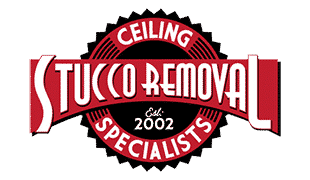When doing popcorn texture removal projects your first concern is whether the texture being scraped away has asbestos in it.
Un-disturbed asbestos will not hurt you but once asbestos fibres start floating around it becomes a problem. Textured ceilings prior to 1980, more than likely containing asbestos which in most areas of the world is considered to be a carcinogen.
If your thinking that your home MIGHT have an asbestos popcorn ceiling it’s best NOT TO REMOVE IT. You’ll first want to purchase an Asbestos Test Kit from your local home improvement retailer. Keeping in mind that these kits can take up to a week (or more) for the results as they have to be sent away to a lab.
If after buying your kit (and testing the texture along with the surface under the texture) you find that you do have asbestos be sure to contact (a relevant) local government agency regarding the removal process. Asbestos by law (in the majority cases) is only to be removed by a certified asbestos abatement company.
For those who feel that removing their popcorn ceilings will be a daunting task, remember that most types of ceilings can be either bleached, painted, re-boarded or re-splattered. By having professional painters, dry-wallers or ceiling bleachers offer you a free estimate you’ll be given guidance as to what technique will work best for your particular situation. Such guidance is especially useful if what your contending with is an asbestos issue.
Even if your not dealing with an asbestos popcorn ceiling, health issues can still incur if the texture isn’t removed properly in the first place. Be sure to use a respirator, goggles and tight protective clothing (duct taped at the arms and legs) along with a good hat. Your intentions are to keep the dust and debris from getting all over your skin and into your lungs.
Below you will find how to instructions for how to prepare for Popcorn Ceiling Removal in Toronto.
